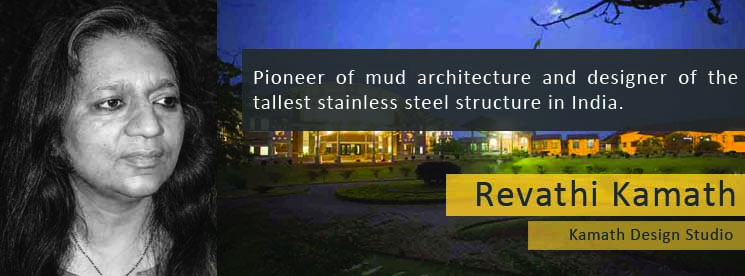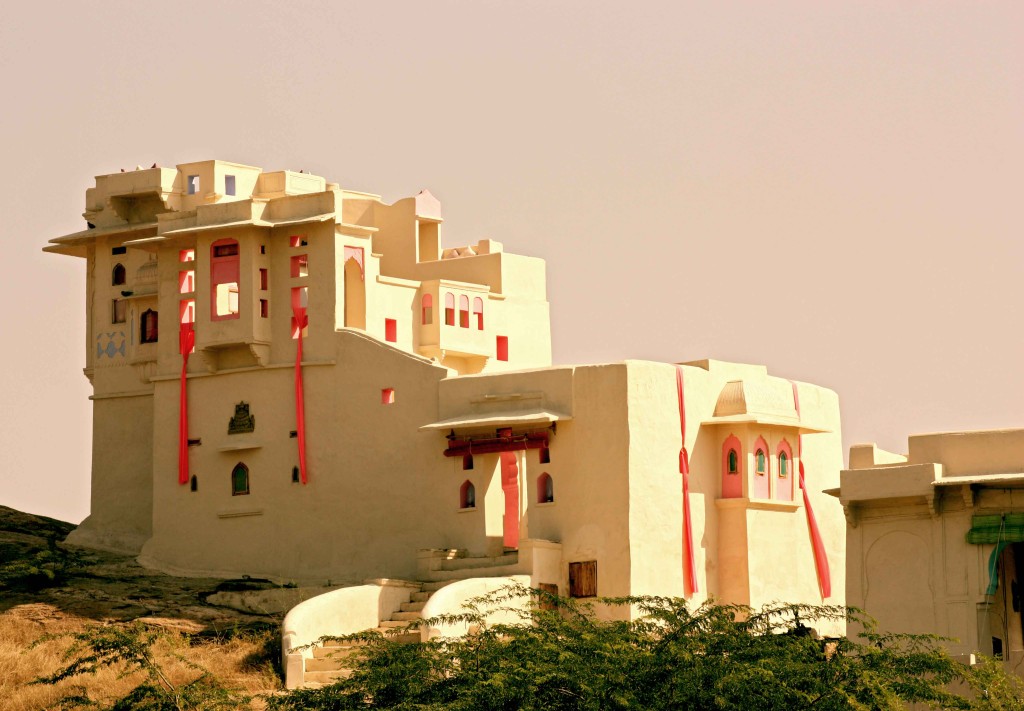
Architect and planner based in Delhi, Revathi Kamath is a pioneer of mud architecture in India. On the other hand, she is also credited with building the tallest stainless steel structure in India. She obtained her Bachelor’s degree in Architecture (1977) and completed a post-graduate programme in Urban and Regional Planning (1981) both from the School of Planning and Architecture, Delhi. After graduation, she worked with Stein, Doshi and Bhalla for a year and later with Rassik International, Architects and furniture designers in New Delhi. In 1979, she started work with The GRUP (Group for Rural & Urban Planning), a partnership firm between Vasant Kamath, Romi Khosla and Narendra Dengle.
In 1981, she opened a firm with Vasant Kamath, “Revathi and Vasant Kamath”, which later came to be known as “Kamath Design Studio – Architecture, Planning and Environment” (2005). The studio has handled a wide variety of projects, in diverse social, economic and geographical contexts. The Anandgram Project for Rehabilitation of slum dwellers near Shadipur Depot, Delhi was one of the earliest in early 1983. Revathi Kamath is noted for her sensitive efforts for conceiving the “Evolving Home” concept for redevelopment. She consulted with 350 families to understand individual needs and to give them a first home on the ground.
Source – Wikipedia
Laxman Sagar Resort
The Lakshmansagar Resort, located at the foot of the Aravalli range, is built around the Lakshmansagar Lake on the site of a 19th century hunting lodge of the Thakur of Raipur. The original structures consisted of a colonnaded veranda and a ‘haveli’. The colonnade, which was used as the ‘mardana’, overlooks the plains on one side and the lake on the other while the three-storey ‘haveli’ enclosing a courtyard was used as the ‘zanana’.
See more details about the Laxmansagar Resort and Other projects HERE.







